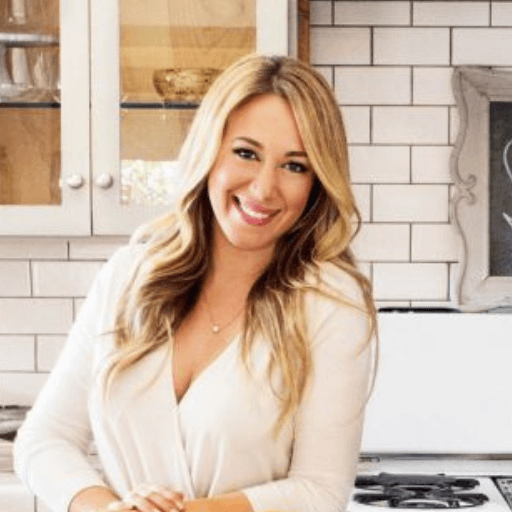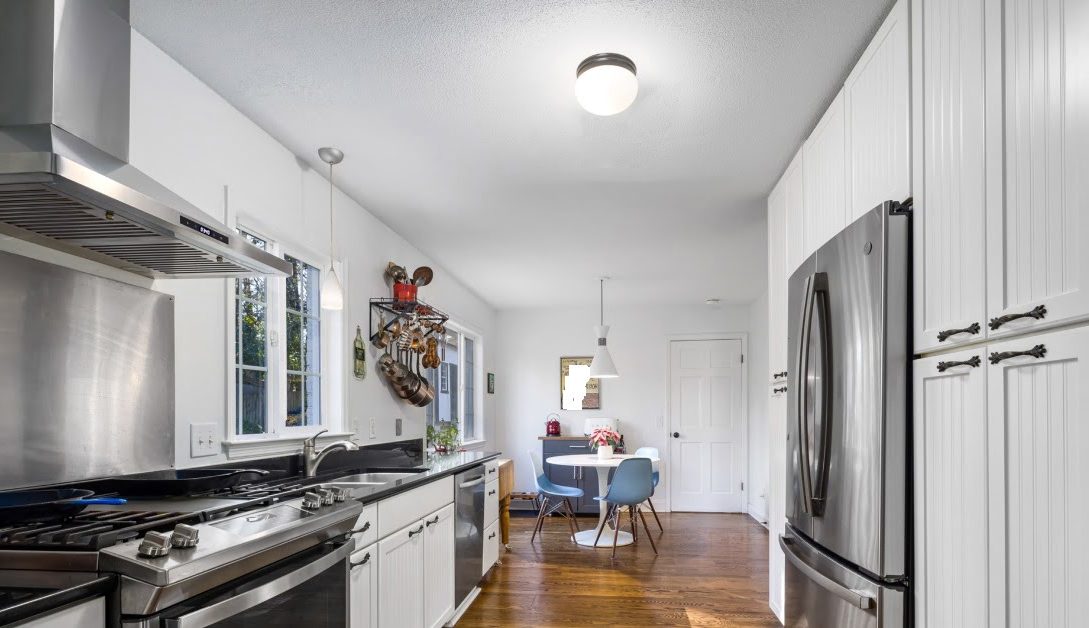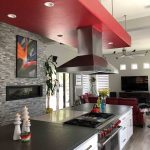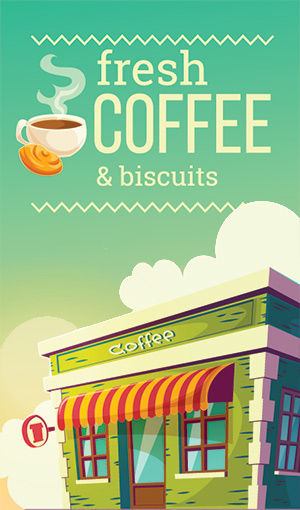A recirculating range hood is a kitchen appliance that removes smoke, steam, and grease from the air and recirculates clean air back into the kitchen. It is an alternative to vented range hoods that exhaust polluted air outside.
A recirculating range hood is a sleek and modern appliance that eliminates the need for costly and complicated ductwork. It is an ideal choice for homes that have limited or no access to external ventilation. This type of range hood uses filters to clean the air and recirculate it back into the kitchen.
It helps to maintain a clean and healthy environment while cooking. Recirculating range hoods come in a variety of sizes and styles, so homeowners can choose one that fits their kitchen decor. This appliance is an essential addition to any kitchen for those who love to cook without filling their home with smoke and unpleasant odors.
Credit: issuu.com
Benefits Of Recirculating Range Hoods
Recirculating range hoods are becoming increasingly popular in modern kitchens. They are designed to eliminate smoke, odors, and gases from cooking, while also cleaning the indoor air of any pollutants. Unlike traditional range hoods, recirculating hoods do not require any ductwork to direct the polluted air outside of the house.
Instead, they use filters to purify the air and then release it back into the kitchen. In this section, we will discuss the benefits of recirculating range hoods.
Lower Installation Costs
Recirculating range hoods are much easier and less expensive to install than traditional range hoods. Since there is no need to install any ductwork, there is no need to cut into the walls or ceiling. This means that there is less construction work required, and therefore, a lower installation cost.
Moreover, the lack of ductwork also means that you don’t need to make any modifications to your kitchen’s layout.
- No need to cut walls or ceilings
- Reduced construction work
- Lower installation cost
Cleaner Air Inside The Home
Recirculating hoods work by cleaning the indoor air of any pollutants, such as smoke, odors, and gases. The purifying process removes the contaminated air, and then releases it back into the kitchen. This results in cleaner, fresher air inside the home.
Since the air is not vented outside, there is less likelihood that the polluted air will seep back inside when windows and doors are closed.
- Eliminates smoke, odors, and gases
- Cleaner, fresher air inside the home
- No chance of polluted air coming back inside
Improved Energy Efficiency
Recirculating range hoods use less energy than traditional hoods, making them more energy-efficient. Since there is no need for any ductwork, energy is not wasted on venting the polluted air outside. This means that recirculating range hoods require seventy-five percent less energy than traditional hoods.
- Uses less energy
- More energy-efficient
- No energy wasted on venting polluted air outside
No Need For Ductwork
Recirculating range hoods do not require any ductwork to direct the polluted air outside of the house. Instead, they use filters to purify the air and then release it back into the kitchen. This means that installation is much simpler and can be done by a professional or even a diy homeowner.
- No need for ductwork
- Simplified installation process
- Can be installed by a professional or homeowner
Recirculating range hoods have many benefits, including lower installation costs, improved energy efficiency, cleaner air inside the home, and no need for ductwork. Plus, they are not only an excellent choice for the environment, but they can even improve the quality of life for homeowners.
How Recirculating Range Hoods Work
Recirculating range hoods have grown in popularity in recent years. They are an excellent choice for homeowners who prefer not to vent out their range hood. Instead, recirculating range hoods purify the air before circulating it back into the kitchen.
Have you ever wondered how a recirculating range hood works? In this section, we’ll take an in-depth look at their mechanisms.
Understanding The Recirculating Process
Recirculating range hoods clean the air by sucking in cooking smoke and steam. Inside the range hood, the air passes through a series of filters. In the recirculating process, the range hood collects grease and carbon from the air and eliminates particles and odours, ensuring the air is free of harmful chemicals before redistributing it into the kitchen.
The Role Of Filters In Recirculating Range Hoods
Range hoods have two types of filters that work together to purify the air; the grease filter and the carbon filter.
The Grease Filter
The grease filter works to eliminate grease, which is one of the most common causes of cooking smoke. It is positioned at the bottom of the range hood and traps grease as it passes through the filter, preventing it from clogging the oven hood’s other parts.
The Carbon Filter
The carbon filter eliminates unpleasant odours, capturing fumes and moisture. It comprises small charcoal particles that attract and eliminate particles responsible for the unpleasant smell of food during cooking.
Comparing Different Filter Types
When selecting a recirculating range hood, it’s important to consider the type of filter it uses. There are two main types of filters; baffle and mesh filters.
Baffle Filters
Baffle filters are made up of a series of curved and welded metal panels. These filters force the air to change direction when passing through the range hood, causing grease to condense onto the filter while allowing clean air to flow freely.
Mesh Filters
Mesh filters, commonly known as aluminum grease filters, are usually the standard filters found in many range hoods. They consist of multiple layers of thin aluminum mesh that trap grease particles.
Maintenance And Cleaning Of Filters
It’s essential to clean and maintain your filter regularly, as a clogged filter can hinder your range hood’s efficiency and even pose a fire hazard. Your range hood’s instruction manual will provide detailed instruction on how to clean the filters.
As a general rule, you should clean range hood filters once every three months. In most cases, filters are removable and can be soaked in warm, soapy water before rinsing them with clean water. If your filter cannot be cleaned or is too filthy, it’s best to replace it altogether.
Recirculating range hoods are an energy-efficient choice for homeowners who desire a practical oven hood. By learning about their mechanisms and filter types, you can make the most informed decision when selecting your range hood.
Factors To Consider When Choosing A Recirculating Range Hood
For those in search of an efficient kitchen ventilation system, the recirculating range hood is an excellent option. Unlike the ducted range hoods that pump polluted air outside, this hood recirculates it back into the kitchen after removing contaminants. Here are some crucial factors to consider when choosing one for your kitchen:
Size And Capacity Of The Range Hood
The size and capacity of the range hood depend on the size of your kitchen and the type of cooking you do. Consider the following factors:
- The hood should be large enough to cover your stovetop to trap smoke, cooking smells, and airborne pollutants.
- The capacity of the range hood should be high enough to suck out the polluted air while balancing the sound level.
Noise Level And Location Of The Range Hood
The recirculating range hood that suits your kitchen should produce minimal noise while operating. Here are some tips on location:
- Hood should be installed directly above the cooking range to trap cooking fumes and filter them out.
- Keep it at least 20 inches away from the cooktop or burners to ensure proper ventilation.
Type Of Filter And Filter Replacement Cost
The type of filter used, and the replacement cost determines the efficiency of the range hood. Check out these types of filters used in recirculating range hoods:
- Charcoal filters (activated carbon filters) captures odor, smoke, and chemical pollutants. They typically last for about six months to a year, depending on usage.
- Mesh filters trap grease but should be cleaned regularly. They are washable and do not need replacement as often as charcoal filters.
Overall Cost Of The Range Hood
Budget is an essential factor to consider. Here are some tips to help you choose a hood that matches your budget:
- The cost of the range hood should be affordable, and the maintenance cost shouldn’t break the banks.
- Keep in mind that the overall cost of the range hood depends on the features, performance, and quality.
Installation And Maintenance Of Recirculating Range Hoods
Diy Installation Vs. Professional Installation
It’s always possible to opt for do-it-yourself (diy) installation of your recirculating hood. However, a professional installation job guarantees better performance and longevity from your range hood. Here are some key points to consider when deciding between diy or professional installations:
- A professional installer will ensure that your range hood is installed in the appropriate location, with accurate measurements and efficient ventilation.
- Professional installation ensures that the ductwork, wiring, and ventilation system are in full working order, reducing the risk of technical issues and safety hazards.
- A professional installer can easily work around any peculiarities unique to your kitchen. It’s better to rely on an expert to handle any unforeseen problems that may occur during installation.
- A diy installation might seem like a good way to save money, but if not done correctly, it could lead to more robust repair costs that could have been avoided if you had hired a professional installer.
Common Challenges During Installation
The installation process for a recirculating range hood can be challenging and complex. Here are some common issues that you may encounter:
- Challenge 1: Incorrect installation of the ductwork could lead to poor performance and lingering kitchen smells.
- Challenge 2: Choosing the wrong size or design of the range hood that is not suitable for your kitchen could create unnecessary installation difficulties.
- Challenge 3: Inadequate ventilation or ductwork can result in smoke, grease, and excess moisture buildup, eventually resulting in potential health hazards.
Regular Maintenance Tips For Optimum Performance
Maintaining optimum performance from your recirculating hood requires regular upkeep. Here are some tips to maintain it regularly:
- Regular cleaning is crucial. Wipe down the outside surface and the interior regularly to remove grease, dust, and other grime that could clog the system or degrade its performance.
- Filters should be cleaned or replaced at least every six months. Grease filters trap dirt, grease, and other contaminants, so they should be cleaned regularly.
- A well-ventilated kitchen can prevent grease and smoke buildup. Open windows or turn on the fan to ensure proper ventilation while cooking.
- Check the ventilation duct regularly to ensure there are no blockages. Clogged ductwork could affect performance, leading to poor air quality in your kitchen.
Troubleshooting And Repair Guide For Common Issues
It’s not uncommon to experience technical issues with your recirculating range hood. Here are some common issues and troubleshooting tips:
- Issue 1: An unpleasant odor emanating from the hood – it could be due to a dirty filter or improperly vented ductwork. Clean or replace the filter and hire a professional to inspect your ductwork system.
- Issue 2: The fan is slow or won’t turn on – check the wiring, or if a belt-powered fan, verify if the belt is secure and correctly installed. Defective wiring should be fixed by a professional electrician.
- Issue 3: Excessive noise – this could be caused by a loose or missing screw, dirt in the motor, or a malfunctioning fan. Tighten screws, clean motor, or replace the damaged fan parts.
By following these installation, maintenance, and repair tips, you can ensure your recirculating range hood performs efficiently with little or no issue, providing optimal kitchen air quality for a better cooking experience.
Frequently Asked Questions On What Is A Recirculating Range Hood
What Is A Recirculating Range Hood And How Does It Work?
A recirculating range hood, also known as a ductless range hood, filters smoke, grease, and odors from your kitchen by drawing in air, passing it through charcoal filters, and venting it back into the kitchen as fresh air.
What Are The Advantages Of A Recirculating Range Hood?
Recirculating range hoods can be installed easily in any kitchen as they do not require ductwork. They are also energy-efficient and quieter than traditional range hoods, making them ideal for condos and apartments.
Are Recirculating Range Hoods Effective In Removing Smoke And Odors?
Yes, recirculating range hoods are effective in removing smoke and odors, but they do not vent them outside. Over time, the charcoal filters inside the hood need to be replaced to maintain their effectiveness.
Do Recirculating Range Hoods Require Any Maintenance?
Yes, recirculating range hoods require maintenance. The charcoal filters inside the hood need to be cleaned or replaced periodically to ensure the hood is working effectively.
Can A Recirculating Range Hood Be Converted To A Ducted One?
Yes, a recirculating range hood can be converted to a ducted one with the help of a professional. This involves installing ductwork to vent smoke and odors outside of your kitchen.
Conclusion
From the discussion above, we can conclude that recirculating range hoods are an excellent solution for households or commercial kitchens where setting up an exhaust vent out of the space is not feasible. The range hood’s recirculating feature filters and purifies the air before it is released back into the room, providing a healthier and cleaner cooking environment.
Additionally, these range hoods are energy-efficient and less expensive to install than vented options. However, one should keep in mind that despite the filtration process, recirculating range hoods do not offer the same level of performance as ducted models. It’s essential to choose the appropriate hood size and filter type to ensure its efficiency according to your cooking habits and kitchen size.
When selecting a recirculating range hood, choose a trusted brand, compare features, and read product reviews to make an informed decision.

Freda is a passionate foodie and kitchen gadget enthusiast. With over 10 years of experience in the culinary industry, Freda brings her expertise in testing and reviewing kitchen gadgets.





